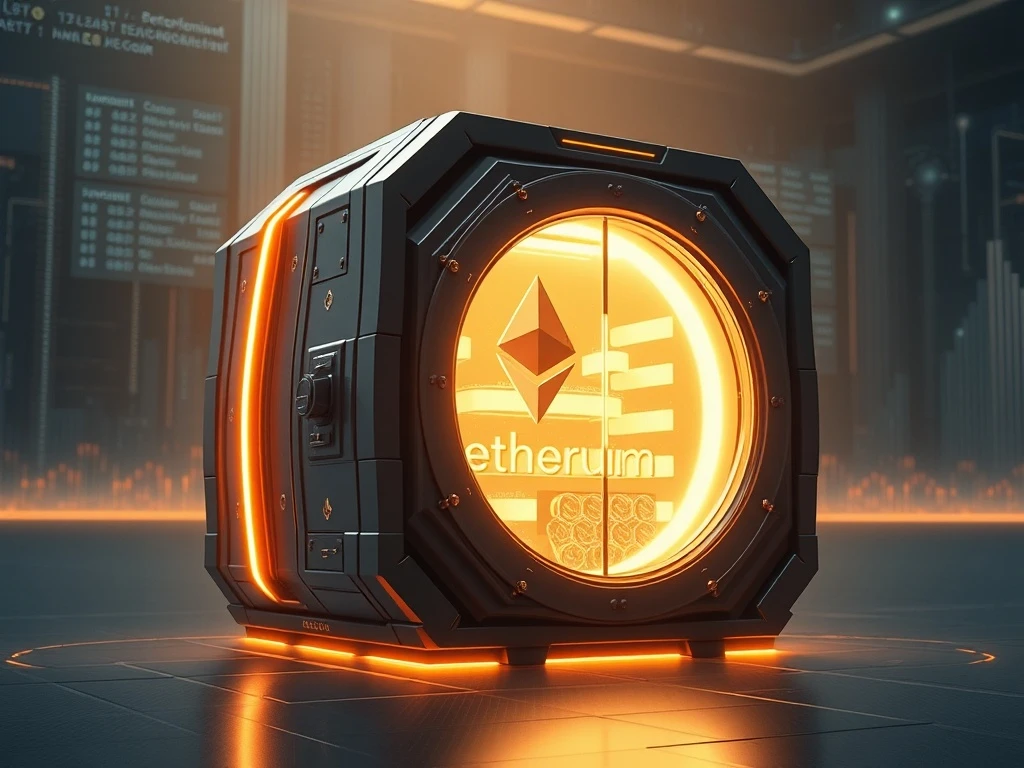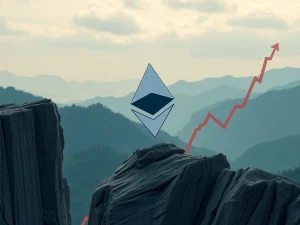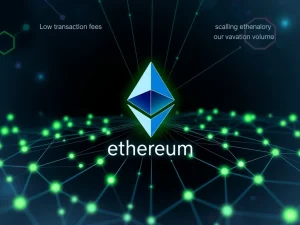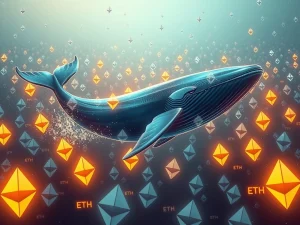Ethereum DATs: Unlocking the Next Berkshire Hathaway for the Decentralized Economy

A revolutionary financial concept is emerging in the cryptocurrency world. Joseph Lubin, co-founder of Ethereum and ConsenSys founder, believes **Ethereum DATs** (Digital Asset Treasuries) will transform the decentralized economy. He envisions them becoming a ‘Berkshire Hathaway-style’ investment vehicle. This bold prediction captures significant attention from investors and industry observers alike.
Joseph Lubin’s Vision: The Future of ETH Treasury
Joseph Lubin, a prominent figure in the blockchain space, proposes a groundbreaking strategy. He suggests that Ethereum-based digital asset treasuries will offer exceptional returns. Furthermore, he sees these opportunities surpassing those provided by Bitcoin counterparts. Lubin shared his insights exclusively at Token2049 in Singapore. He detailed his thesis on why Ether (ETH) digital asset treasuries present superior opportunities. This perspective contrasts with the Bitcoin (BTC) treasury movement, famously popularized by Michael Saylor’s MicroStrategy.
Lubin articulated his preference for Ether as a treasury asset. “I’d much rather have something that potentially has more impact,” he stated. “It certainly is as solid as Bitcoin, and I would argue more solid because of the functionality and the organic demand for it to pay for transactions and storage.” This highlights his conviction in ETH’s utility and intrinsic value. Significantly, the Ethereum co-founder actively champions **ETH Treasury** strategies. He was recently appointed chairman of SharpLink Gaming, an ETH-based treasury company. This Nasdaq-listed iGaming company has acquired over $2 billion worth of Ether since adopting its treasury strategy in August.
Inspired by Saylor: A New Approach to Digital Asset Treasuries
Lubin openly acknowledges Michael Saylor’s influence. Saylor’s financial engineering constructs, which position Bitcoin as a reserve asset, provided a crucial impetus. “I was fortunate enough to sit down and have dinner with him in December,” Lubin recalled. “I heard his rationale for doing all that. It was basically about finding better treasury capital assets for his company.” This meeting sparked a new line of thinking for Lubin and his colleagues. They quickly realized Ether offered distinct advantages as a treasury asset.
“I talked to my colleagues who immediately thought, it’s obvious that Ether would be a better treasury asset,” Lubin explained. “This is because it’s a productive yield-bearing asset.” This distinction is critical. Unlike Bitcoin, Ether can be staked to earn yield, adding another layer of potential returns for treasury companies. Lubin maintains an optimistic outlook for Ethereum’s medium-term future. He predicts the **Ethereum Ecosystem** will reach its “broadband moment” by 2025. This means the protocol will achieve greater horizontal and vertical scalability, creating a high demand for cheaper, abundant block space.
Catalyzing Growth in the Ethereum Ecosystem
Lubin observed that Ethereum had scaled too rapidly in the preceding 18 months. This left a “glut of block space” that lacked sufficient builders, applications, and transactions. “I really thought that there were doldrums in our ecosystem,” Lubin commented. “That was all about price because there was too much Ether and too much cheap block space.” To address this, he envisioned a solution. He proposed initiating a movement of **Ethereum DATs** that would aggressively acquire the underlying token, actively stake it, and invest Ether.
This strategy aimed to invigorate the ecosystem. “We thought maybe we could light a fire under the Ethereum ecosystem,” Lubin stated. “And that’s worked out really nicely. We’ve got a few companies, and we’re differentiating ourselves in exciting ways.” The burgeoning ETH DAT landscape is quickly expanding. Currently, two significant players dominate: Lubin’s SharpLink and Tom Lee’s BitMine. BitMine, driven by Lee’s fervent bullish stance on Ether, represents the proverbial whale in this space. As of October 8, the company had acquired 2.65 million ETH. Its holdings are valued at $11 billion, significantly surpassing SharpLink’s 839,636 ETH stack, worth $3.69 billion.
Supply-Demand Dynamics and the Berkshire Hathaway Ambition
Lubin initially anticipated a rapid accumulation of ETH. However, this strategy evolved after Tom Lee publicly declared a target of acquiring 5% of Ether’s total monetary base. “We weren’t thinking of a limit,” Lubin revealed. “But we did think that we can’t accumulate too much ETH, otherwise there’d be pushback from the ecosystem.” The long-term objective for Lubin and SharpLink is to increase the concentration of Ether per fully diluted share. Simultaneously, they aim to protect the equity’s price. Following this, SharpLink plans to continue earning yield on its staked Ether. This proactive approach supports the broader **Ethereum Ecosystem**.
Lubin envisions a future where SharpLink strategically borrows against its ETH holdings. It will then invest in Ethereum-centric companies and stake in supporting protocols. “The real opportunity is to be the **Berkshire Hathaway** of the next global economy,” Lubin asserted, “the more decentralized global economy.” This ambition underscores the transformative potential he sees in ETH DATs. It suggests a future where these treasuries play a central role in capital allocation and growth within the decentralized finance space.
Weighing the Risks of Digital Asset Treasuries
The DAT movement is poised to become a significant narrative in 2025. However, skeptics express concerns about the systemic risks involved. Treasury companies incur substantial debt to purchase protocol tokens, raising questions about stability. Lubin, however, downplayed fears of a catastrophic collapse driven by DATs. He did caution against companies becoming over-leveraged. “The biggest risk is not doing this kind of thing because it’s a profound new construct,” Lubin argued. He believes the benefits outweigh the potential pitfalls, provided prudent financial management.
**Joseph Lubin** anticipates a significant increase in ETH price. This growth will stem from tightening supply-demand dynamics, primarily fueled by ETH DAT buying. “The financial industry is rushing into our ecosystem,” he observed. “Other enterprises are rushing into our ecosystem. It’s our broadband moment. Everybody’s paying serious attention to what we’re doing. We’re not going to get out over our skis.” This statement reflects strong confidence in the maturity and future trajectory of the **Ethereum Ecosystem**, signaling a pivotal moment for digital asset treasuries.









